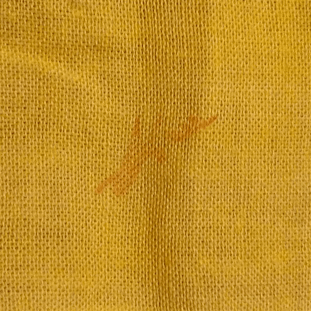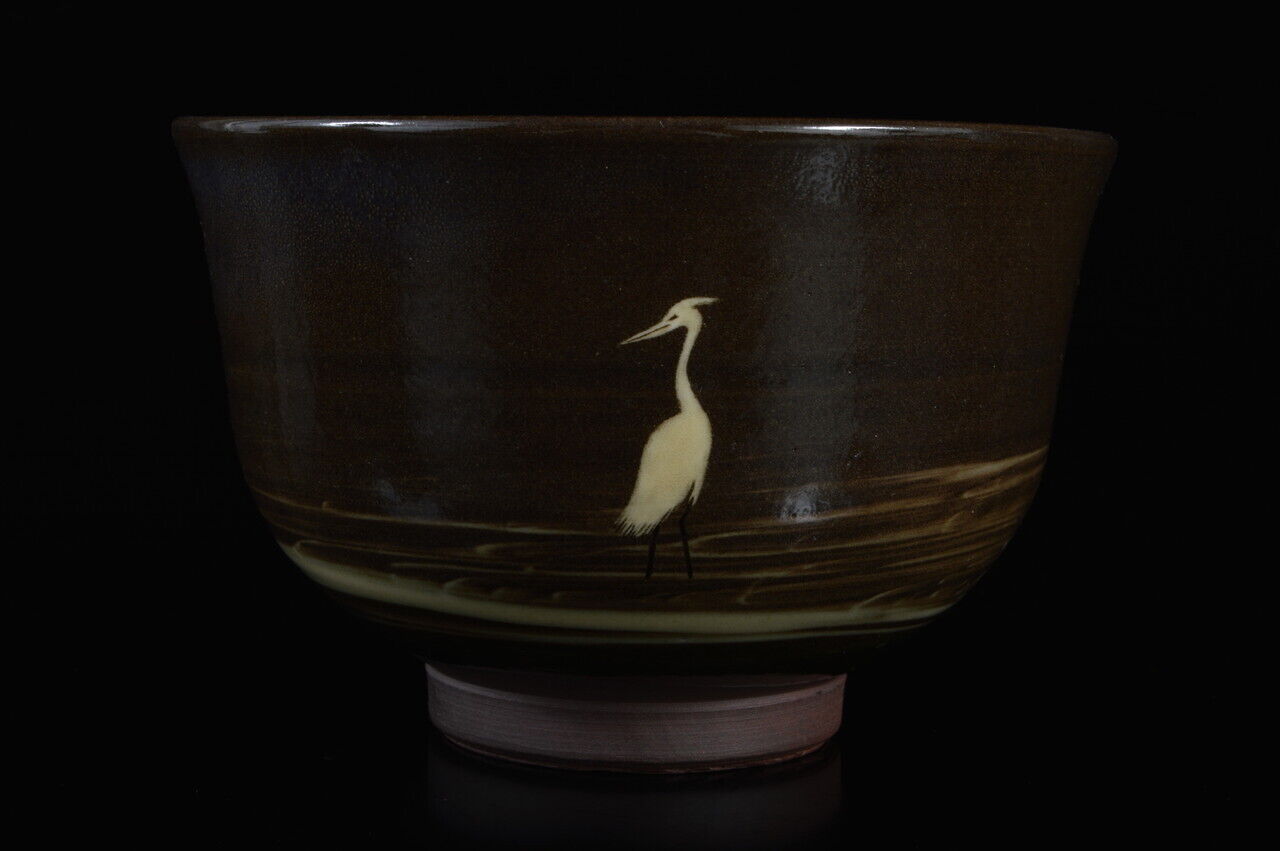
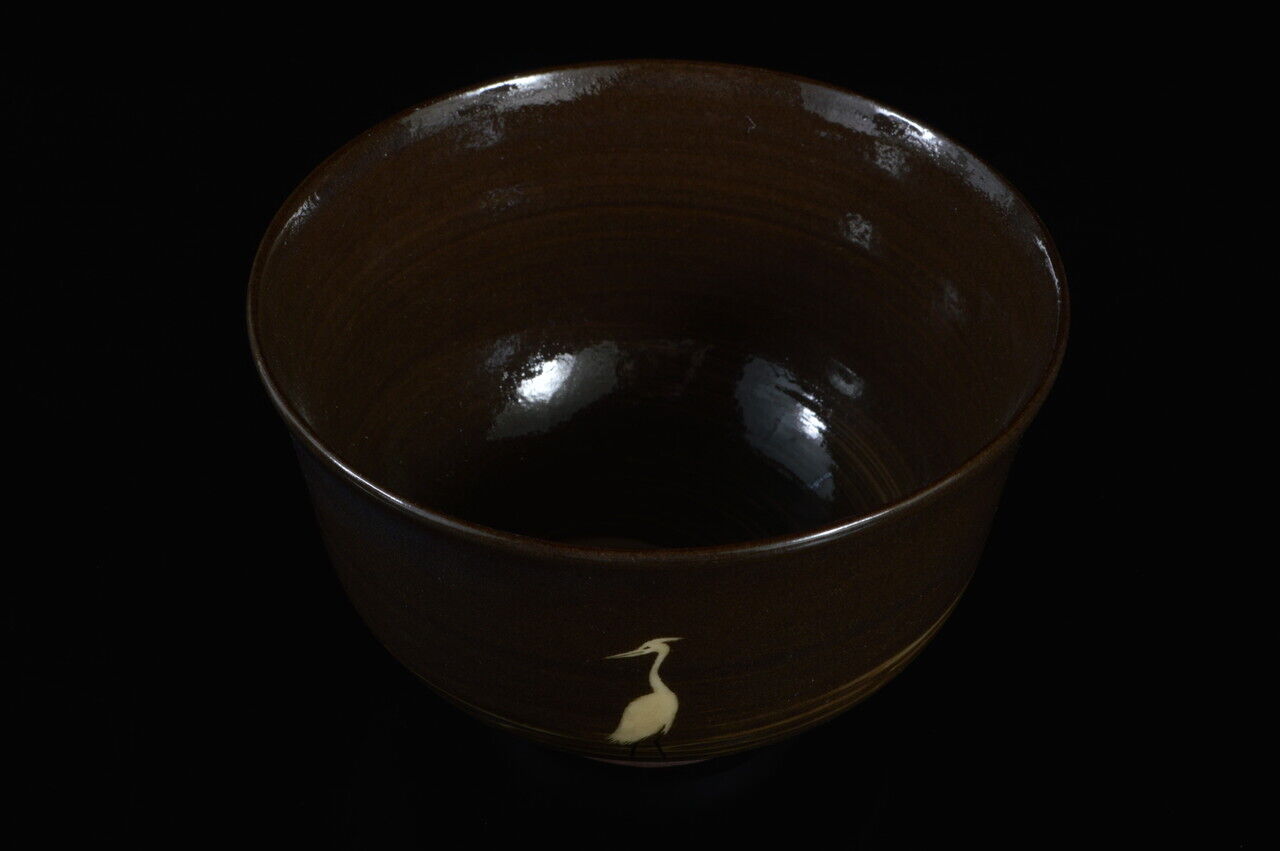
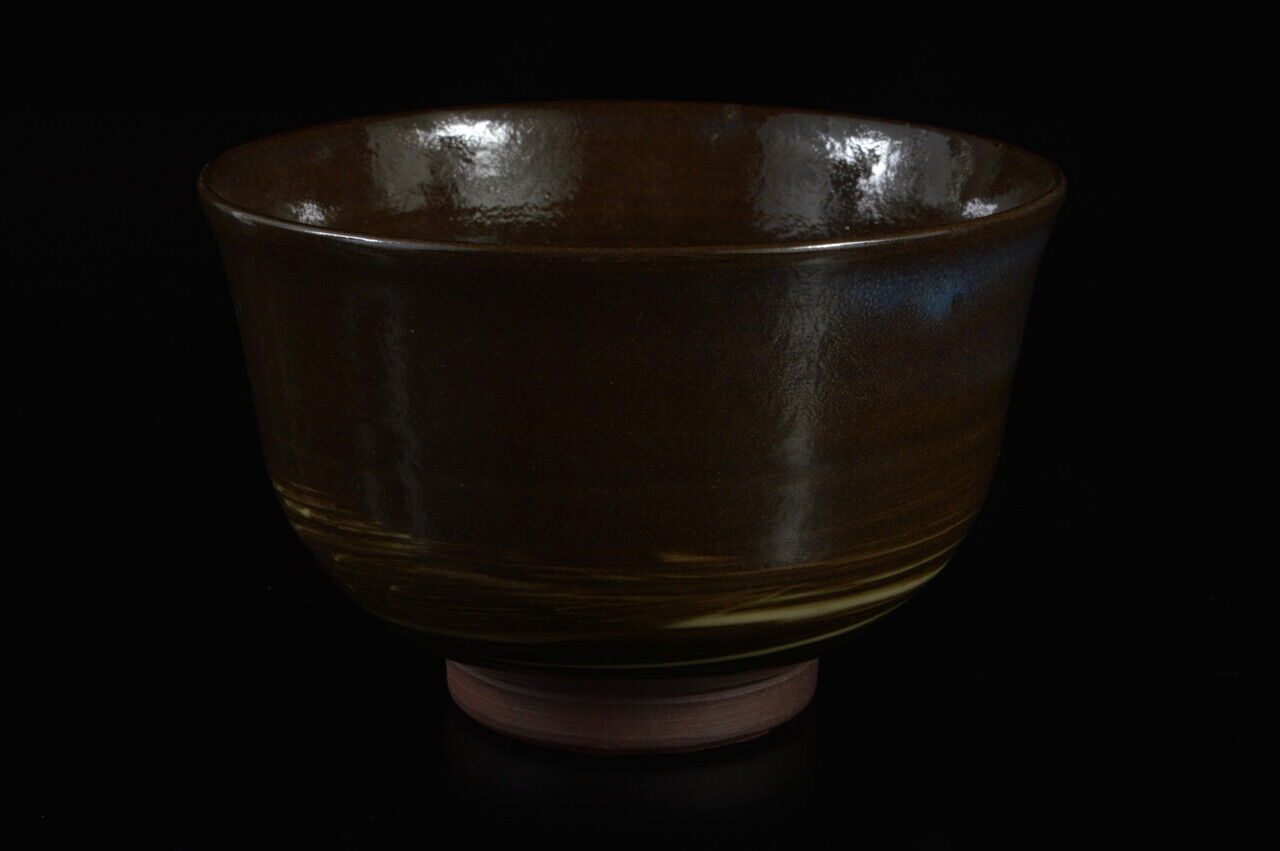

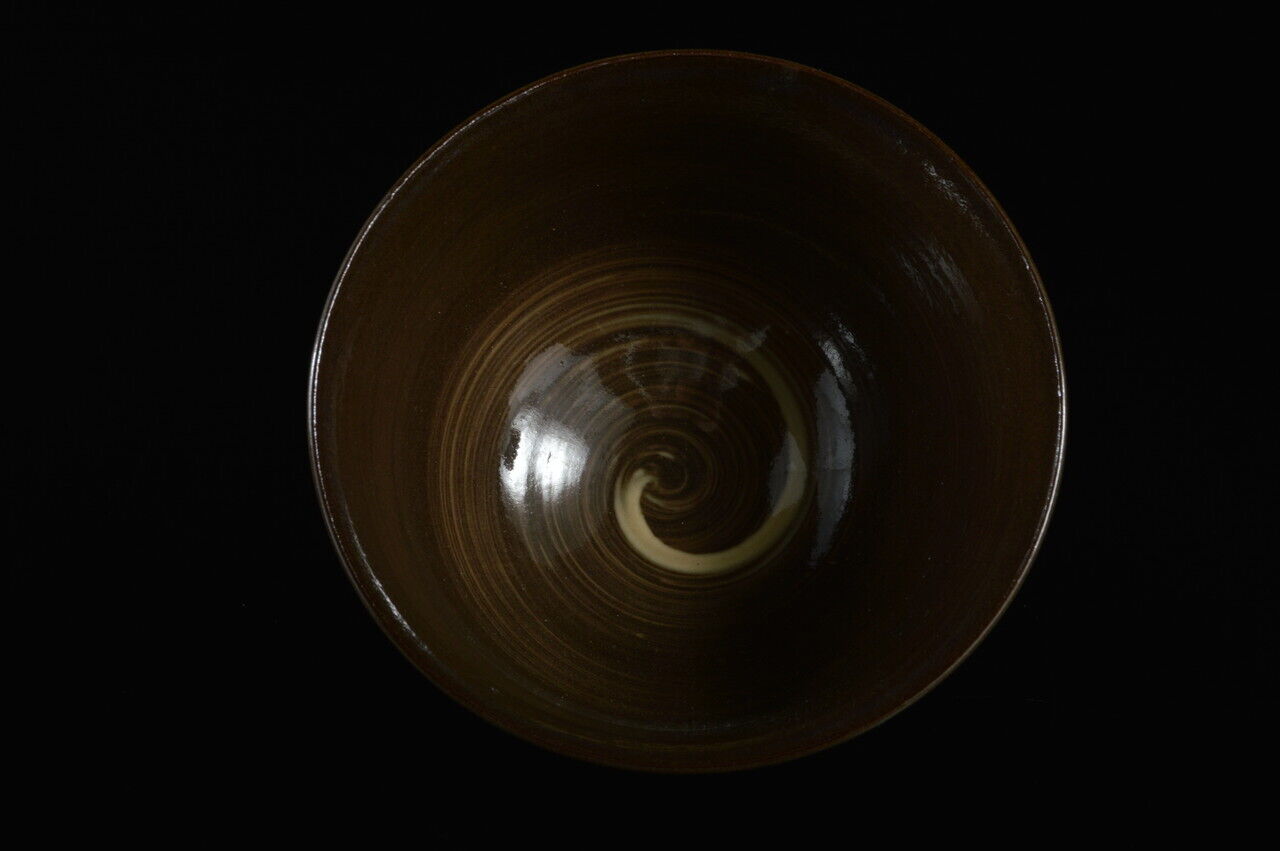


Potter: Yokoishi Gagyu, 13th generation
Approximate size: W4.8″ by 3.1″ by H1.2″ or 8.0 by 12.2 by 8.0 cm
A highly refined Utsutsugawa chawan, ceremonial tea bowl with the characteristic hakeme or brush stroke patterns and trademark sagi, egret by the 13th Yokoishi Gagyu (1925-). Not easily acquired, chawan like this are the epitome of the Utsutsugawa pottery and the lineage that is inextricably linked with the ware. Successor to the 12th generation and famous throughout Arita and the rest of Japan. His father is credited with reviving the lost art of Utsutsugawa yaki in the late 1800’s and like his father he employs the (250 year!), old brush techniques which is what gives Utsutsugawa ware its distinctive style. It is now a registered as what is known as an important cultural property of Nagasaki Prefecture.

Works by the 13th Yokoishi Gagyu are known for the sense of movement, flow and perfect balance of visual weight in his designs. This chawan perfectly fits that description. Light and seemingly tender in shape and finish. The clay once dried to leather hardness was covered in white slip and manipulated by brush while wet. The slip is manipulated in multiple ways depicting water, grasses and wind. It exemplifies the expertise and evidences that although this lineage solely uses this technique for their wares the ways its can be executed are many. It is clear that this requires a lot of experience and that it has be executed flawlessly in order not to show any mistakes. The egret is added last and like the rest of the slip design it shows the tiniest of brushstroke and details. Note the blue flux near the rim.
Over the years, the 13th Yokoishi Gagyu has been presented at an impressive number of exhibitions – many of which private but also displayed publicly at the Nihon Dento Kogeiten (National Traditional Crafts Exhibition), amongst numerous others.
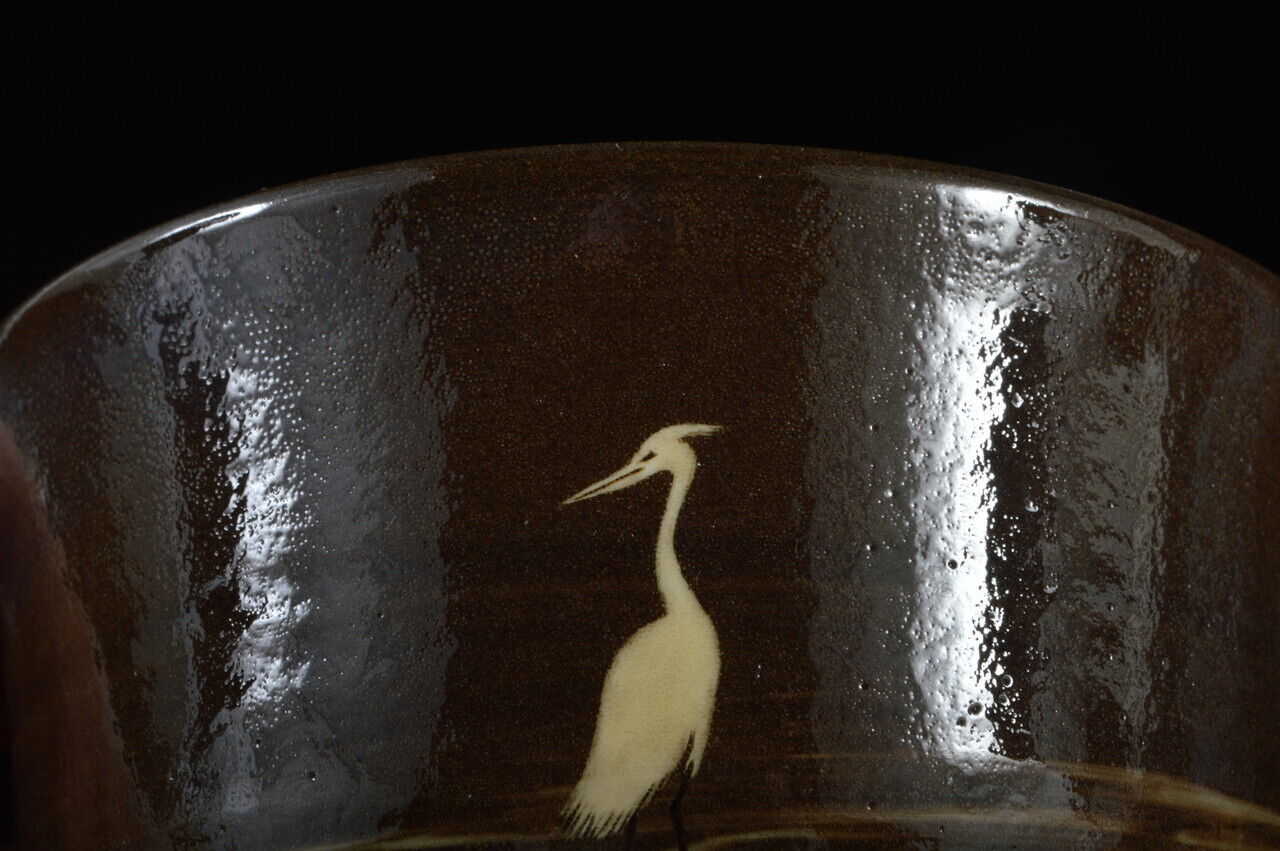

Yokoishi Gagyu first exhibited at the age of 30, in 1955 and took home the governors prize at the Nagasaki Kenten Prefectural Art Exhibition. This was the beginning of a prestigious career prolific with awards culminating in being named an Important Cultural Property of Nagasaki prefecture in 1975 (the state version of the Living National Treasure). It is important to note that Nagasaki prefecture borders on Saga prefecture where he was born.
Yokoishi Gagyu was the 13th successor at the Gagyu-gama or Gagyu kiln in Arita, Saga prefecture. The kiln is a designated intangible culture asset of Japan. Gagyu is considered the most famous kiln in Western Japan and called a “Ninsei (the most famous kiln in Kyoto) in Kyushu”. The kiln was build early in 17th century, Edo period but disappeared late 1800’s for which the exact reasons are unclear. Restored during the second half of the 19th century by the 12th successor of Gagyu. For to this reason, they are called the ‘legendary’ kiln of Saga prefecture (on Kyushu island), and is well known all over Japan.

The chawan is signed on the inside of the koudai, foot ring. There are no chips or cracks and condition is mint. Comes with the original high quality shiho san paulownia tomobako or storage box with the potter’s stamp and calligraphy on the side and a stamped tomonunu or tea cloth.
SOLD
Thank you very much!
